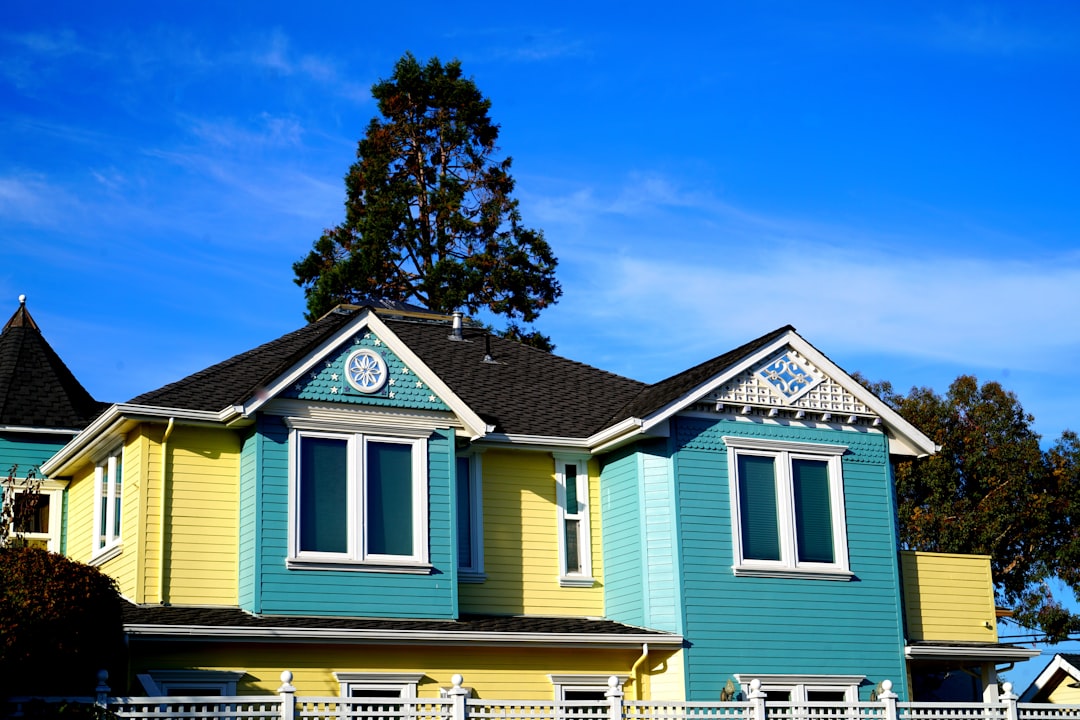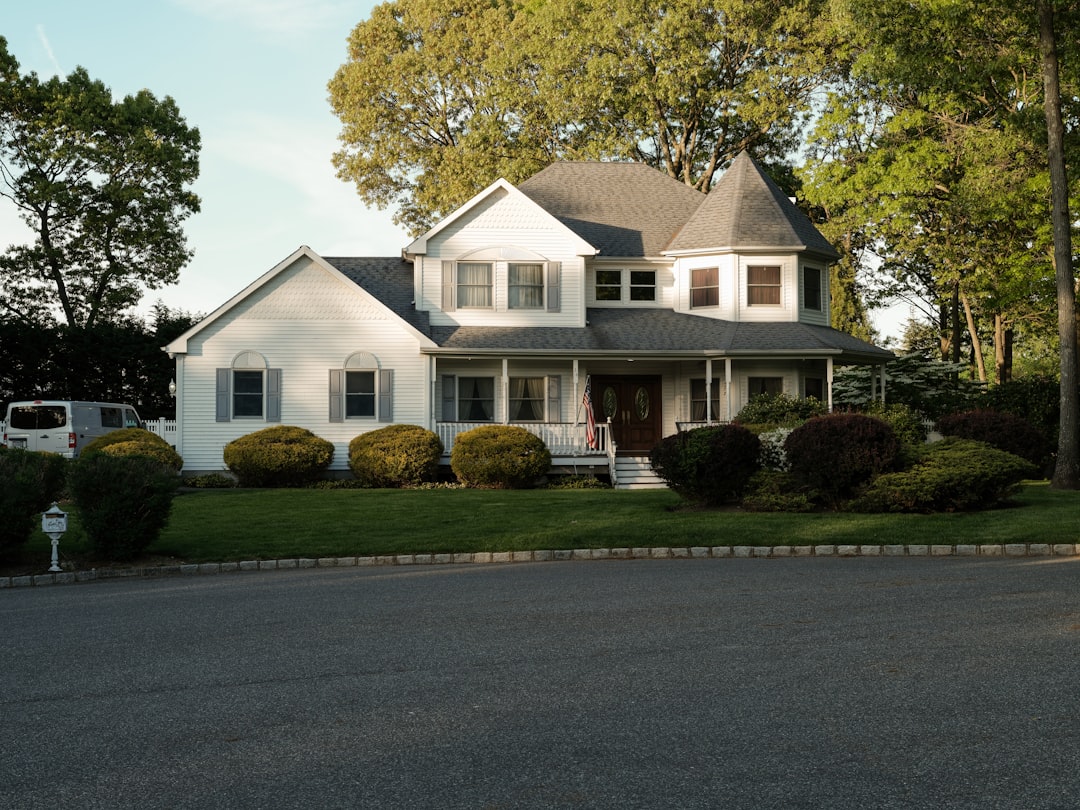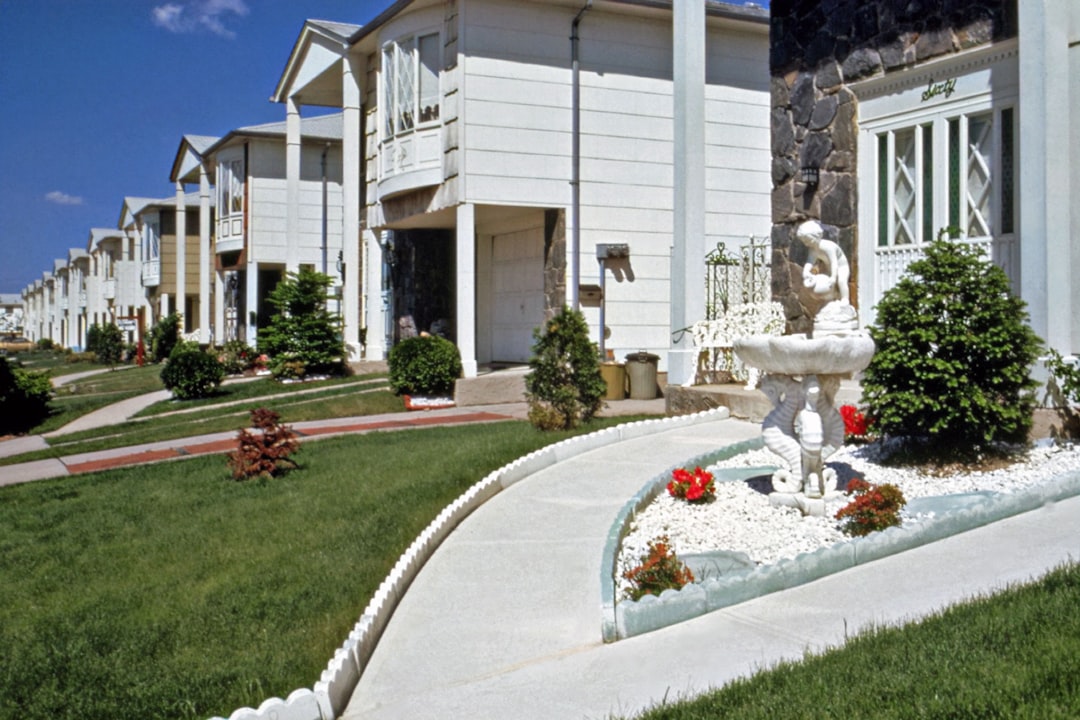

Engage prospects with a scan and streamline customer engagement with FREE QR code marketing tools by Sona – no strings attached!
Create a Free QR CodeFree consultation

No commitment

Engage prospects with a scan and streamline customer engagement with FREE QR code marketing tools by Sona – no strings attached!
Create a Free QR CodeFree consultation

No commitment
Today’s home sales agencies face the daily reality of a crowded and fast-moving marketplace, where missing even a single high-intent prospect can mean the difference between a closed deal and a lost opportunity. Potential buyers and sellers increasingly expect immediacy and seamlessness, demanding tools that connect them instantly to listings, agents, and property insights. At the same time, static marketing like flyers and brochures frequently falls short, unable to track who’s engaging or foster decisive digital action when it matters most.
QR codes have quickly shifted from being simple digital add-ons to becoming strategic gateways in real estate marketing, as Forbes on QR codes highlights. They remove friction by turning physical touchpoints, such as yard signs, open house flyers, and direct mail, into data-rich entry points for prospects. A simple scan lets house-hunters immerse themselves in virtual tours, schedule visits, or save agent contacts, all without a form fill. For agencies, this removes the guesswork of anonymous engagement and links offline efforts with measurable, high-value actions.
As home sales agencies focus on improving both conversion rates and customer experience, QR code strategies, especially those integrated with advanced tracking and CRM systems, offer a powerful way forward. This guide explores how modern QR implementations can address the pain points of missed prospects, anonymous leads, and slow follow-up, creating a high-performance pipeline from every physical interaction.

Traditional manual processes like paper sign-in sheets or static brochures often delay or even prevent the capture of high-value prospects, and information can slip through the cracks before an agent ever has a chance to engage. A visitor at an open house may jot a barely legible email, grab a brochure, and leave with no digital trail that supports timely follow-up. This routinely results in missed opportunities, as leads who walk away untracked may turn to a competitor that acts faster and more precisely.
Modern QR code integrations transform these static touchpoints into instant lead magnets, converting scans into CRM entries and campaign triggers in real time. When a prospect scans a code on a yard sign, a flyer, or a window display, they can book a viewing, request disclosures, or save an agent’s contact card on the spot. The agency gains visibility into intent and recency of interest, so reps can prioritize the right outreach and deliver helpful information fast. With trackable, editable links and attribution features, the Sona QR product overview shows how to operationalize this across teams and properties.
With the right infrastructure, agencies can move beyond fragmented, manual capture, ensuring every scan is a tracked, actionable step toward conversion. Dynamic QR codes and integrated analytics close the loop between offline interest and digital follow-up, allowing you to test, learn, and scale what works.

One of the biggest frustrations in real estate marketing is the inability to see which anonymous prospects are actually engaging with printed collateral. A stack of brochures or a well-designed yard sign may reach hundreds of eyeballs, yet you cannot tell who took interest or what motivated them. Without digital hooks, agencies lose visibility into buyer intent and let potential leads pass by unnoticed. This makes budgeting and attribution guesswork, and it weakens your ability to respond quickly when prospects are most receptive.
By embedding QR codes in key touchpoints, agencies instantly create an interactive and measurable experience for prospects. Now, a house-hunter who scans a flyer to view a virtual tour or schedule a showing is immediately visible in agency systems, and that engagement can be tracked for timely follow-up. Dynamic QR implementations such as Sona QR’s industry hub allow agencies to adjust destinations as listings change, keeping every touchpoint current and actionable. The code printed on your spring yard sign can point to a new listing in summer without a reprint.
This closes the loop between offline impressions and digital activity, enabling teams to prioritize high-fit leads and reduce the risk of letting interested parties slip away anonymously. When QR scans sync to your CRM and automation stack, your agents can respond with speed and context, providing the details that move prospects forward.

Not all buyer journeys are the same, and matching QR formats to prospect needs is essential for relevance and results. Agencies frequently encounter challenges like incomplete data capture from busy open houses or cumbersome processes for saving agent details. Versatile QR formats help address these roadblocks and adapt to different stages of the funnel.
Dynamic QR platforms support instant updates and segmentation, so campaigns remain relevant and measurable even as listings or priorities evolve. Static codes are fine for evergreen materials, like an agent’s vCard, but dynamic codes are ideal when you need editability, A/B testing, and analytics at scale. With a platform like Sona QR, you can generate any of these formats, centrally manage destinations, and connect scan data to downstream tools for full-funnel visibility.
Even when agencies invest in high-visibility collateral, failing to connect offline and online touchpoints leads to churn and untapped upsell potential. A prospective buyer might tour multiple open houses or pick up property sheets but never submit their contact info, resulting in missed nurture opportunities. Sellers exploring comps may photograph signs and brochures, then drift toward whichever agent follows up first with value.
Growth-oriented teams focus on the physical contexts that already capture attention, then they add scannable prompts that lower the barrier to action. When every handout, rider, and postcard becomes clickable, you turn passive browsing into measurable steps along the path to purchase. For inspiration, browse Bitly’s real estate examples.
This ensures no prospect is left anonymous, and every interest signal generated offline can be surfaced for timely agent action. When you see which assets generate scans and downstream activity, you can double down on the placements and messages that move the needle.

Home search activation, open house smart registration, and instant agent connect represent three of the highest impact applications for QR codes in home sales. These use cases take high-traffic moments and insert a fast, trackable action that benefits both prospect and agent.
These applications target the critical moments where buyer signals too often go unnoticed and transform them into opportunities for richer engagement, easier tracking, and improved close rates. By mapping each use case to a clear outcome, your team can benchmark success and iterate with confidence.
A recurring challenge in real estate is that meaningful buyer actions, like requesting a virtual tour or picking up a flyer, are rarely tied to targeted follow-up. Agencies often lack the data to segment and personalize nurture flows, leaving revenue on the table. Every QR code scan becomes a data point for audience building when it captures context like property ID, location, and call to action.
To turn scans into segments, assign distinct codes to different properties, stages, and intent categories. A yard sign scan for 123 Maple Street might indicate neighborhood interest, while a brochure scan inside the property might reflect deeper consideration. When those signals flow to your CRM and ad platforms, you can tailor outreach with listing updates, price drops, or financing content that aligns to the buyer’s journey. For a tactical framework, see Sona’s Playbook titled Intent-Driven Retargeting: Driving High-Impact Campaigns with First-Party Intent Signals.
With Sona QR, each code becomes a smart entry point that appends metadata to contact records and creates dynamic lists in your marketing stack. In real estate contexts, valuable distinctions include buyers versus sellers, first-time buyers versus seasoned investors, owner-occupiers versus renters exploring a move, and neighbors engaging with a “coming soon” listing versus out-of-area buyers responding to paid media.
Fragmented marketing channels often hinder agencies from connecting the dots between offline exposure and digital conversion. A campaign may drive high brochure distribution and increased foot traffic, but without scannable calls to action and centralized tracking, it is difficult to prove which placements influenced online inquiries or closings. QR codes unify your print, out-of-home, and in-person tactics with your digital platforms. To connect offline scans to known accounts, see Sona’s blog post titled The Essential Guide to Account Identification: Turn Your Website into a Goldmine.
A coordinated QR strategy allows you to test messages, designs, and placements across media, then consolidate performance in one dashboard. By tagging codes and destinations by channel and property, you can identify what works for different audiences and optimize in flight. This reduces waste and amplifies the tactics that generate real pipeline.
QR codes serve as the offline onramp to your digital marketing engine. With a centralized platform like Sona QR, you can manage codes across teams, monitor performance, and sync scan data with your CRM and attribution tools. This creates a connected funnel where every offline impression has a digital destination and a measurable outcome.
Launching your first or next QR initiative does not require a complex overhaul. You need a clear goal, a trackable code type, scannability in the field, and a way to measure what happens after the scan. The following steps translate the essentials into a repeatable playbook that your team can deploy across listings, neighborhoods, and events.
Use this checklist to maintain consistency across agents and campaigns, while preserving the flexibility to test layouts, calls to action, and destinations by property type and audience segment. The result is a scalable practice that compounds learning over time.
Define your campaign goal, such as generating virtual tour views, capturing high-intent open house leads, booking listing consultations, or attracting potential sellers with a valuation offer. Anchor the code’s purpose to an outcome you can measure, like showings booked per 100 scans or seller inquiries sourced from direct mail.
Choose a QR format that supports both your user experience and your measurement needs. Static codes work for evergreen destinations like an agent’s vCard, while dynamic codes are best for listings and campaigns that change. Dynamic codes also enable analytics, A/B testing, and destination updates without reprinting.
Invest in scannability and clarity. Add your logo or brand colors to the code, and include a strong, benefit-driven call to action near it. Test on different devices, distances, angles, and lighting conditions, and validate that the landing page loads quickly and looks great on mobile.
Roll out codes on the materials that see the most buyer and seller action, including property handouts, yard signs, storefront windows, open house table tents, and direct mail. Match placement to audience behavior and scanning context, such as eye level for window posters or lower placement on yard signs for drivers who stop.
Monitor every scan from initial interaction to downstream CRM stages. Use UTM parameters and property tags to attribute performance accurately. Review conversion funnels, identify drop-off points, and test alternative calls to action, landing pages, or code designs to boost engagement and outcomes.
By automating routine post-scan workflows and tying each engagement back to lead records, agencies ensure that no prospect slips through unnoticed. A repeatable process, powered by dynamic codes and connected analytics, turns each scan into a catalyst for fast, effective follow-up that shortens time to conversion. Start creating QR codes for free.
A persistent challenge is demonstrating how offline engagement ties to closed-won deals, making it difficult to justify marketing spend and allocate resources effectively. QR codes provide the missing data layer, capturing who scanned, where, and when, then associating that signal with a contact record and a specific listing. When that data flows into your CRM and attribution tools, you can connect the dots between signage, mailers, open houses, and revenue.
The analytic journey should move beyond counting scans to understanding outcomes. You want to see how many scans turned into tours booked, offers submitted, or listings won. You also want to measure which placements produce the highest-quality leads, not just the highest volume. This clarity enables budget shifts toward channels and messages that produce pipeline and profitability. For measurement strategy, read Sona’s blog post titled The Essential Guide to Offline Attribution: Maximizing ROI Through Offline Channels.
With Sona QR and Sona.com, you can track scans in real time, sync them to your CRM, and visualize progression across stages. Sona QR captures the initial signal and engagement context, while Sona.com connects anonymous scans to known buyers through identity resolution and brings together activity across website visits, email engagement, and ad clicks. The result is a complete picture from first scan to signed contract, and a roadmap for increasing your return on every print dollar.
Scaling QR success requires consistency, education, and ongoing optimization. Your goal is to build a habit across the team to include a clear call to action and a trackable code in every physical asset, then to act on the insights you collect. When agents see how scan data helps them prioritize and personalize, adoption accelerates. For broader best practices, see QR codes in marketing. For mailer strategy, review Wise Pelican’s guide to QR codes for real estate.
Focus on tips that align to common real estate media like direct mail, brochures, signs, and open houses. The more you match your QR design to the environment where it appears, the higher your scan and conversion rates will be.
Creative deployments can include seller valuation mailers with “Scan to get your home’s price range” or neighborhood signage inviting browsers to “Scan for open houses today.” When paired with automation and CRM integration, these tactics reduce manual work and increase the speed to meaningful conversation.

A national brokerage eliminated manual open house registration by introducing QR-powered check-ins, allowing agents to instantly identify and prioritize high-value visitors as they entered. Attendees scanned a code on a table tent, answered two qualifying questions, and received a text with the tour schedule and disclosures. The hosting agent saw responses in the CRM within minutes and could tailor conversations based on preferences captured at entry.
In a suburban market, QR codes on for-sale signs funneled neighborhood browsers into a segmented retargeting campaign, resulting in a measurable increase in both engagement and eventual showings. When a passerby scanned for photos, they landed on a lightweight page optimized for mobile, with a one-tap option to book a showing or subscribe to price updates. Scans from specific blocks were added to local audiences for direct mail and social retargeting.
Another agency tracked which bus stop ad locations garnered the most scans, focusing budget on high-performing routes and improving ROI on future campaigns. They iterated the call to action from “See the listing” to “See the 3D tour” and observed stronger engagement from commuters, indicating that specificity and rich media drove higher intent. Even small but strategic steps, like replacing static business cards with QR-enabled vCards, reduced the risk of missing potential buyers or sellers who interacted but did not fill out a form, leading to more callbacks and deeper pipelines. For signage execution ideas, see this overview of QR code signage.
To extend these wins, agencies built referral loops by placing QR codes on “Just sold” mailers that invited neighbors to scan for a market snapshot and schedule a listing consult. They also captured user-generated content at community events by prompting visitors to scan a code to upload neighborhood photos that appeared in listing pages, creating a sense of local pride and increasing shareability.
Position QR codes wherever natural buyer interaction takes place. High-traffic signage, event collateral, and print touchpoints are fertile ground for conversions, as long as the code is scannable, the call to action is clear, and the mobile experience is fast. Think about the physical context and match your design choices to distance, lighting, and dwell time. For placement ideas, explore QR posters.
Avoid common mistakes that sabotage performance. Generic CTAs, low-contrast codes, and destinations that are not mobile ready can depress scan rates and lead to drop-offs after the click. Neglecting to track scans or to connect them to your CRM makes it hard to prove impact or to follow up effectively. Build an operational cadence around testing, learning, and training so your QR practice improves continuously.
QR codes have evolved from marketing side-notes to foundational pieces within the modern real estate toolkit. For home sales agencies, they bridge the long-standing gaps between analog touchpoints and digital capture, allowing businesses to reveal, track, and act on high-intent leads that would otherwise remain invisible. The ability to attribute offline signals to digital outcomes unlocks real clarity on where marketing spend delivers true value and empowers agents to respond quickly, prevent lost opportunities, and capitalize on cross-sell or upsell moments. As agencies look to accelerate growth in a competitive market, thoughtfully integrated QR strategies supported by analytics-rich and CRM-connected platforms ensure every prospect touch becomes a measurable step toward sustained success.
QR codes have transformed home sales agencies from traditional marketing methods into dynamic, measurable conversion engines. Whether it’s attracting new buyers, enhancing property viewing experiences, or streamlining follow-ups, QR codes replace cumbersome processes with instant, mobile-friendly actions that capture real-time engagement data—turning every listing brochure, open house sign, or flyer into a powerful conversion tool. Imagine knowing exactly which marketing collateral drives serious buyer interest—and being able to optimize your strategy on the fly.
With Sona QR, creating dynamic, trackable QR codes is effortless. Update your campaigns instantly without reprinting materials, track every scan, and connect offline inquiries directly to closed deals. No more guesswork, just smarter, more profitable home sales marketing. Start for free with Sona QR today and turn every scan into a qualified lead and a step closer to your next sale.
Home sales agencies embed QR codes on physical touchpoints like yard signs, flyers, open house materials, and direct mail to connect prospects instantly to virtual tours, booking tools, agent contacts, and property details, turning offline interactions into measurable digital engagement.
QR codes enable agencies to track anonymous prospect engagement, convert passive viewers into active leads, update listings dynamically without reprinting, improve follow-up speed and accuracy, and bridge offline marketing with digital CRM and analytics systems for better attribution and conversion.
By using QR codes that provide instant access to virtual tours, schedule visits, save agent contacts, and enable self-serve open house registrations, agencies create seamless, interactive experiences that reduce friction and accelerate buyer decision-making.
Effective strategies include placing QR codes at high-intent locations like open house tables and yard signs, designing clear conversion journeys that prompt bookings or inquiries, using dynamic codes to keep listings current, integrating scan data with CRM for lead prioritization, and combining QR codes with direct mail and outdoor ads.
Agencies generate leads by converting offline interest through QR code scans into CRM entries, triggering automated follow-ups, segmenting audiences by intent and location, retargeting prospects with personalized content, and measuring campaign performance to optimize marketing spend and agent outreach.
Use Sona QR's trackable codes to improve customer acquisition and engagement today.
Create Your FREE Trackable QR Code in SecondsJoin results-focused teams combining Sona Platform automation with advanced Google Ads strategies to scale lead generation

Connect your existing CRM

Free Account Enrichment

No setup fees
No commitment required

Free consultation

Get a custom Google Ads roadmap for your business






Launch campaigns that generate qualified leads in 30 days or less.
